Uni-T UT58E Handleiding
Uni-T
Multimeter
UT58E
Bekijk gratis de handleiding van Uni-T UT58E (2 pagina’s), behorend tot de categorie Multimeter. Deze gids werd als nuttig beoordeeld door 59 mensen en kreeg gemiddeld 5.0 sterren uit 30 reviews. Heb je een vraag over Uni-T UT58E of wil je andere gebruikers van dit product iets vragen? Stel een vraag
Pagina 1/2

Warning
To avoid electric shock or personal injury, read the
"Safety Information carefully before using the
Meter.
Overview
Unpacking Inspection
Open the package case and take out the Meter. Check
the following items carefully for any missing or
damaged part:
In the event you find any missing or damaged part,
please contact your dealer immediately.
1 English Operating Manual 1 pc
2 Test Lead 1 pair
3 Multi-Purpose Socket 1 pc
4 Test Clip
5 Point Contact Temperature Probe
6 Holster 1 pc
7 9V Battery (NEDA 1604, 6F22 or 009P) 1 pc
1 pair
1 pc
Item Description Qty
Safety Information
This Meter complies with the standard IEC61010:
Pollution Degree 2; Overvoltage Category (CAT. II 1000V,
CAT. III 600V) and Double Insulation.
CAT. II: Local level, appliance, PORTABLE EQUIPMENT
etc., with smaller transient voltage overvoltages than
CAT. III
CAT. III: Distribution level, fixed installation, with smaller
transient overvoltages than CAT. IV
Use the Meter only as specified in this operating manual,
otherwise the protection provided by the Meter may be
impaired.
In this manual, a
actions that pose hazards to the user, or may damage
the Meter or the equipment under test.
A Note identifies the information that user should pay
attention to.
Warning identifies conditions and
Warning
Description
To avoid possible electric shock or personal injury,
and to avoid possible damage to the Meter or to the
equipment under test, adhere to the following rules:
Before using the Meter inspect the case. Do not
use the Meter if it is damaged or the case (or part
of the case) is removed. Look for cracks or missing
plastic. Pay attention to the insulation around
the connectors.
Inspect the test leads for damaged insulation or
exposed metal. Check the test leads for continuity.
Replace damaged test leads with identical model
number or electrical specifications before using
the Meter.
Do not apply more than the rated voltage, as
marked on the Meter, between the terminals or
between any terminal and grounding.
The rotary switch should be placed in the right
position and no any changeover of range shall
be made during measurement to prevent damage
of the Meter.
When the Meter works at an effective voltage
over 60V in DC or 30V rms in AC, special care
should be taken for there is danger of electric
shock.
Use the proper terminals, function, and range for
your measurements.
If the value to be measured is unknown, use the
maximum measurement position and reduce the
range stop by step until a satisfactory reading is
obtained.
Do not use or store the Meter in an environment
of high temperature, humidity, explosive, inflammable
and strong magnetic field. The performance of
the Meter may deteriorate after dampened.
When using the test leads, keep your fingers
behind the finger guards.
Disconnect circuit power and discharge all high
-voltage capacitors before testing resistance,
continuity, diodes, capacitance or current.
Before measuring current, check the Meter's
fuses and turn off power to the circuit before
connecting the Meter to the circuit.
Replace the battery as soon as the battery indicator
appears. With a low battery, the Meter might
produce false readings that can lead to electric
shock and personal injury.
Remove test leads and multi-purpose socket from
the Meter and turn the Meter power off before
opening the Meter case.
When servicing the Meter, use the replacement:
parts with the same model or identical electrical
specifications.
To avoid any damage to the meter or any accident,
do not alter the internal circuit of the Meter randomly.
Soft cloth and mild detergent should be used to
clean the surface of the Meter when servicing.
No abrasive and solvent should be used to prevent
the surface of the Meter from corrosion, damage
and accident.
The Meter is suitable for indoor use.
Turn the Meter power off when it is not in use
and take out the battery when not using for a long
time.
Constantly check the battery as it may leak when
it has been using for some time, replace the battery
as soon as leaking appears. A leaking battery will
damage the Meter.
International Electrical Symbols
AC (Alternating Current).
DC (Direct Current).
Grounding.
Double Insulated.
Low Battery Indication.
Warning. Refer to the Operating Manual.
Conforms to Standards of European Union.
Diode.
Fuse.
Continuity Test.
( Figure 1)
The Meter Structure (See Figure 1)
1 LCD Display
2 Button. HOLD
3 Rotary Switch
4 Input Terminal COM
5 POWER
6 Other Input Terminal.
7 Input Terminal mA
8 Input Terminal 20A
Rotary Switch
Below table indicated for information about the rotary
switch positions.
DC voltage measurement.
AC voltage measurement.
Transistor Test
AC Current Measurement
DC Current Measurement
Fcx Capacitance Test
o
C Temperature Measurement
Diode test
Continuity test
Resistance measurement.
Hz Frequency Measurement
Display Symbols (See Figure 2)
(See Figure 3)
( Figure 2)
4Indicates negative reading.
5Test of diode.
6The continuity buzzer is on.
7Date hold is active.
8
Connect
Terminal
Indicator of connecting test leads
into different input terminals.
,mA, A
A: Amperes (amps). The unit of
current.
mA: Milliamp. 1 x 10-3 or 0.001
amperes.
V: Volts. The unit of voltage.
mV: Millivolt. 1 x 10
-3 or 0.001 volts.
9hFE The Unit of Transistor Test
10 A
Hertz. The unit of frequency in
cycles/second.
Kilohertz. 1 x 10 3
or 1,000 hertz.
kHz
oC: Centigrade temperature
oF: Fahrenheit temperature
oC,oF
F: Farad. The unit of capacitance.
F: Microfarad. 1 x 10
-6 or 0.000001
farads.
nF: Nanofarad. 1 x 10
-9
or 0.000000001
farads.
nF, F
A: Microamp. 1x 10-6 or 0.000001
amperes.
Measurement Operation
To avoid harms to you or damages to the Meter from
electric shock, never attempt to measure voltages
higher than 1000 or 1000V rms although readings
may be obtained.
( Figure 3)
Black Red
B. Measuring DC and AC Current (See Figure 4)
( Figure 4)
Black Red
" "
Warning
Never attempt an in-circuit current measurement
where the open circuit voltage between terminals
and ground is greater than 60V DC or 30V rms in AC.
If the fuse burns out during measurement, the Meter
may be damaged or the operator himself may be
hurt. Use proper terminals, function, and range for
the measurement. When the testing leads are
connected to the current terminals, do not parallel
them across any circuit.
The DC Current ranges: 2mA, 200mA and 20A
The AC Current ranges : 20mA, 200mA and 20A
1. Turn off power to the circuit. Discharge all high-
voltage capacitors.
2. Insert the red test lead into the or input20A mA
terminal and the black test lead into the terminal.COM
When you measure current below 200mA, please
insert the red test lead into the input terminal.mA
When you measure 200mA or above, insert the red
test lead into the input terminal.20A
3. Set the rotary switch to an appropriate measurement
position in or A A range.
4. Break the current path to be tested. Connect the red
test lead in serial to the more positive side of the
break and the black test lead to the more negative
side of the break.
5. Turn on power to the circuit.
The measured value shows on the display.
To measure current, do the following:
( Figure 5)
Warning
To avoid damages to the Meter or to the devices under
test, disconnect circuit power and discharge all the
high-voltage capacitors before measuring resistance.
Note
If the value of current to be measured is unknown,
use the maximum measurement position, and reduce
the range step by step until a satisfactory reading is
obtained.
For safety sake, the measuring time for high current
should be less than 10 seconds and the interval time
between 2 measurements should be greater than 15
minutes
When current measurement has been completed,
disconnect the connection between the testing leads
and the circuit under test, and remove the testing
leads away from the input terminal of the Meter.
C. (See Figure 5)
The resistance ranges are: 200 ,2k ,20k ,2M and
200M
Black Red
D. Testing Diodes and Continuity (See Figure 6)
( Figure 6)
Black Red
To measure resistance, connect the Meter as follows:
"1"
Warning
To avoid damage to the Meter or to the equipment
under test, disconnect circuit power and discharge
all high-voltage capacitors before measuring diodes.
To avoid harms to you, never attempt to input voltages
higher than 60V DC or 30V rms in AC
Measuring Diodes
Use the diode test to check diodes, transistors, and other
semiconductor devices. The diode test sends a current
through the semiconductor junction, and then measures
the voltage drop across the junction. A good silicon
junction drops between 0.5V and 0.8V
Note
In a circuit, a good diode should still produce a forward
,
,
s
No. Symbol Description
1
The battery is low.
Warning: To avoid false
readings, replace the battery as soon
as the battery indicator appears.
Indicator for AC voltage or current.
The displayed value is the mean
value.
3AC
2Warning Symbol.
Digital Multimeter Model UT58E is a 20000-count hand
-held instrument with remarkable features: ex-large
LCD, steady operations, overload protection for all
ranges and unique structure. It is designed with large
-scale integrated circuits and dual integral A/D converter
as the core, which offers 28 measuring ranges and can
measure AC/DC voltage, AC/DC current, resistance,
capacitance, transistor, diode and continuity. It is also
equipped with data hold, full icon display and sleep mode
functions, etc;
DC&AC
in parallel.
in parallel.
Measuring DC and AC Voltage
Measuring Resistance

P/N:110401108703X DATE:20190724 REV.6
Product specificaties
| Merk: | Uni-T |
| Categorie: | Multimeter |
| Model: | UT58E |
Heb je hulp nodig?
Als je hulp nodig hebt met Uni-T UT58E stel dan hieronder een vraag en andere gebruikers zullen je antwoorden
Handleiding Multimeter Uni-T
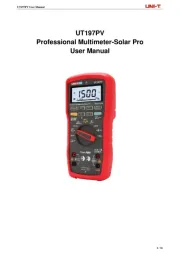
11 Augustus 2025
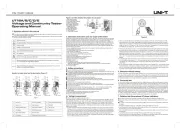
3 April 2025

3 April 2025

3 April 2025
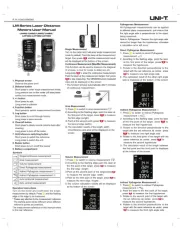
3 April 2025
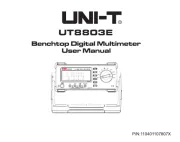
3 April 2025

3 April 2025

3 April 2025

3 April 2025

3 April 2025
Handleiding Multimeter
- Ideal
- Brennenstuhl
- Kurth Electronic
- IWH
- Hager
- Högert
- Keithley
- Owon
- Stanley
- Somogyi
- Tacklife
- Noyafa
- Digitus
- Velleman
- Greenlee
Nieuwste handleidingen voor Multimeter
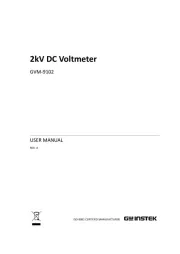
8 September 2025
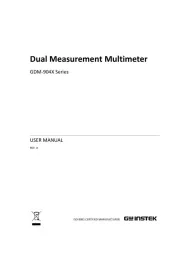
8 September 2025
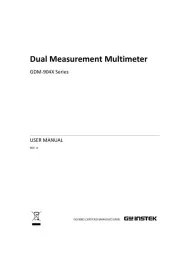
8 September 2025
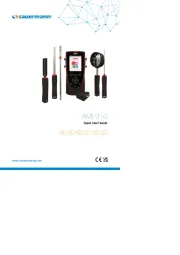
1 September 2025
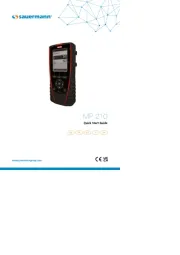
1 September 2025
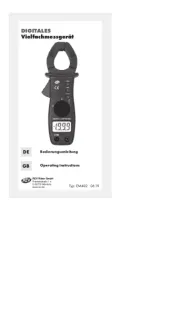
30 Augustus 2025
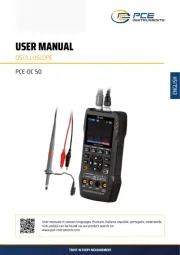
25 Augustus 2025
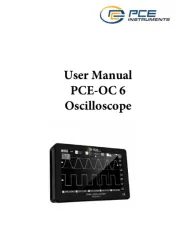
25 Augustus 2025
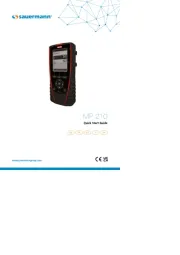
14 Augustus 2025
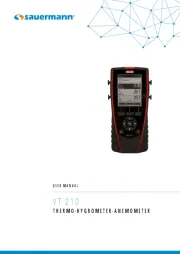
14 Augustus 2025